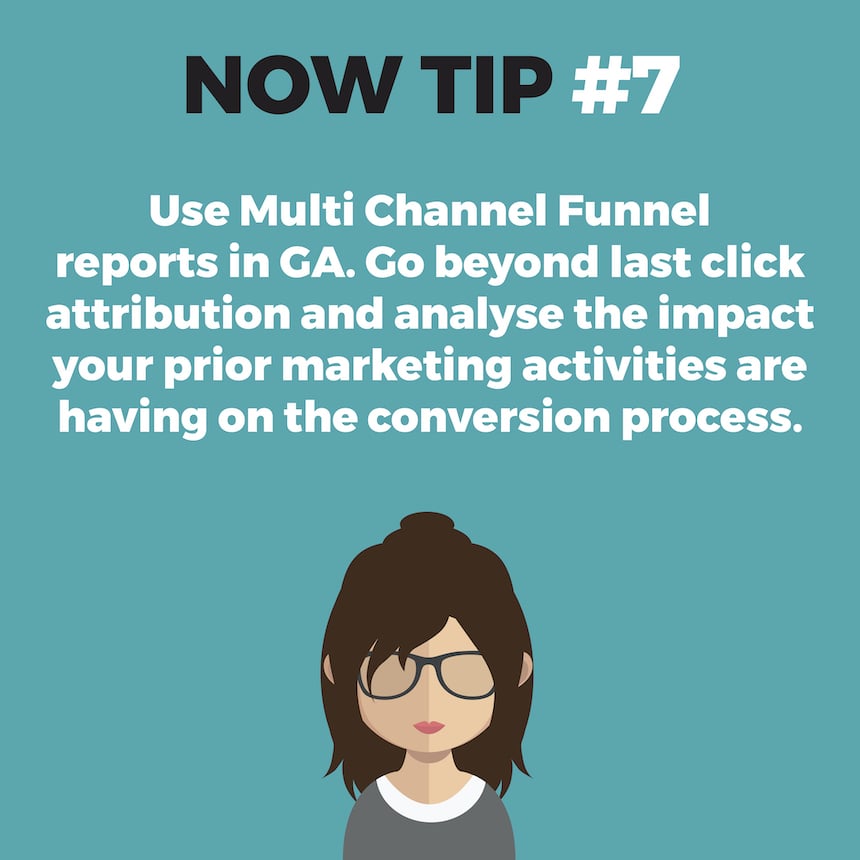If you make sure your Google Analytics setup is completed properly it can give you invaluable data on your site users and their behaviours. The improvement in data quality will help you to continually optimise your site experience and make better more timely data-driven decisions. Here are 17 things you should be doing to improve your GA set-up:
If you added the basic pageview tracking on your website years ago, you might be running an old version of GA called Classic Analytics. In which case you should definitely update and also take the opportunity to start using Google Analytics with Tag Manager.
GTM allows you to easily manage numerous tags and 3rd party tracking. It allows you to create tags, across multiple environments, test and publish all without a code deployment. By far, the biggest benefit of using GTM is that you don’t need developers to help you to create and deploy your custom GA events.
Any changes you make to your website or the traffic you’re driving to it should be annotated in GA so you can map out cause and effect. This is so you can easily identify changes that might have affected your key metrics.
If you have a few web properties, then navigating between properties and managing user permissions can get messy. Make sure you have got all your company’s (or more critically your client’s) properties neatly organised into accounts.
If, for whatever reason your site uses sub-domains or your shopping cart is on a different URL, you should definitely consider setting this up in Google Analytics. Ignoring cross-domain issues could mean the data in your channel groupings is inaccurate and you are unable to track the flow of users and their journey across your sites.
It’s going to happen sooner or later. Someone will ask, “How much traffic did we send that other site?”. Best get ahead of this and use GTM setup events that track clicks on any external link site-wide.
Sure, you can tell how many form submissions there are by counting the emails or DB entries they create. And your Email Service Provider (ESP) can tell you how many subscribers you have, but it can make a lot of sense to have all this data centralised in GA. Mostly importantly it is needed to track your site goals in GA.
Goals are important to measure exactly how your website is contributing to your business. Sure, newsletter subscribers don’t directly add to the bottom line but generally speaking they are easier to convert into and retain as customers. If you’re a content publisher then setting a goal for time on an article page or the depth to which users are scrolling indicates if users are engaging with your content.
When a user comes to an ecommerce site, they either do or don’t buy something. But where exactly did they drop off? Did they make it past the homepage? Did they get to the shipping calculator then bounce? Setting up funnels can help you identify where in a user journey you need to start improving so you can increase your conversions and performance.
If you’re not an ecommerce business you can skip this one. But the reason I’ve listed it here is a lot of ecommerce businesses skip it too. They think they’re fine tracking revenue through their ecommerce platform or ERP. That is until someone asks them which channel drove the most sales or which specific demographic is converting more than others.
This is more important for larger sites. If you’re a content publisher, it could help you see which topics or categories are performing better than others on the site. For ecommerce retailers, it can help you compare the performance of product categories or brands that you sell.
Another really simple thing to set-up is to track what users are searching for on your site. The data collected can not only help make search a better user experience, it can give you valuable insights into how to range and name your products. It can even help give you ideas for new products to sell on your site, based on the popularity of specific search terms.
Maybe not for the beginners, but at some stage you will hit a point where these will come in handy. It might be on a site with a ‘members only’ section to track which users are logged in and which aren’t.
Custom URLs or UTM tags are essential in tracking the effectiveness of your various marketing campaigns, channels and content. Used properly, you’ll be able to see the performance of each activity, its contribution to sales, and which channel it can be attributed to.
Search Console is an essential tool to ensure your site is set-up to rank well on the Search Engine Results Pages (SERPS). It can also provide great ideas on keywords you should be using on your site and in your content.
You and your team are going to be spending a fair amount of time reviewing, visiting and checking your site. This can often cause a noticeable amount of activity in GA. Use a separate view in GA that filters out your office IP address. Make sure to include your agencies and developers’ IP addresses as well.
There were some tricky ways to do this through GTM. Now it is also a feature in GA. All you have to do is tick the checkbox in admin.
Hopefully these tips have given you a great list of things to work on for your website. If there is anything I can help with to help, my team and I at Now Comms Group would love to lend a hand. Please reach out through the Contact Us form.
Digital Mavens is a Digital Solutions Agency based in Surry Hills and founded in 2008. We specialise in ecommerce, digital marketing, and web development. We have experience across many different industries and working with clients which are enterprise, corporate, government and SME. Our purpose is to help our clients bridge the technology gaps between their business and their customers, to build brands and sell more.


